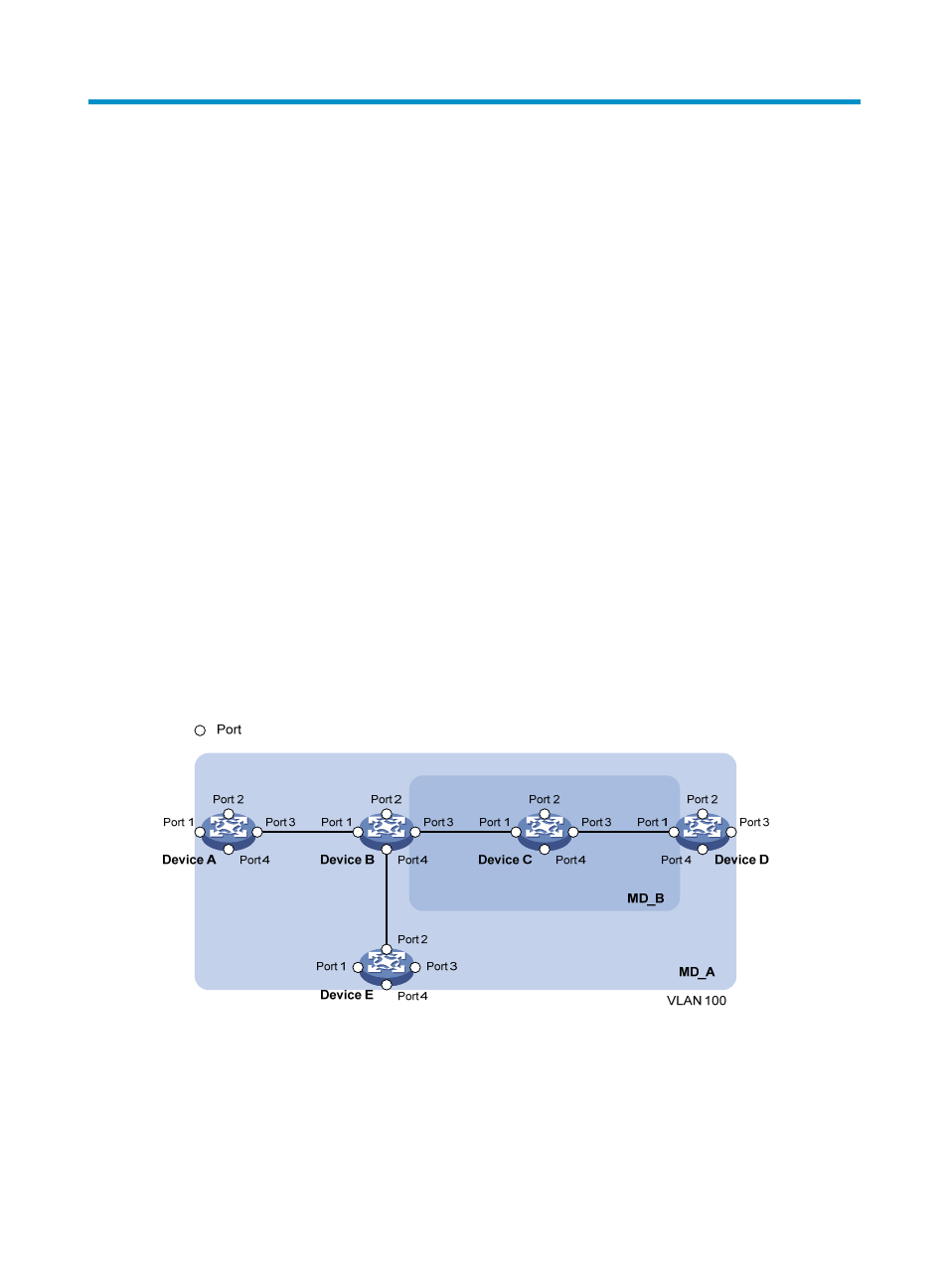Configuring cfd, Overview, Basic cfd concepts – H3C Technologies H3C S12500-X Series Switches User Manual
Page 19: Maintenance domain, Maintenance association, Configuring errored frame seconds event detection

11
Configuring CFD
Overview
Connectivity Fault Detection (CFD), which conforms to IEEE 802.1ag Connectivity Fault Management
(CFM), is an end-to-end per-VLAN link layer OAM mechanism. CFD is used for link connectivity detection,
fault verification, and fault location.
Basic CFD concepts
Maintenance domain
A maintenance domain (MD) defines the network or part of the network where CFD plays its role. An MD
is identified by its MD name.
To accurately locate faults, CFD introduces eight levels (from 0 to 7) to MDs. The bigger the number, the
higher the level and the larger the area covered. Domains can touch or nest (if the outer domain has a
higher level than the nested one) but cannot intersect or overlap.
MD levels facilitate fault location and make fault location more accurate. As shown in
, MD_A in
light blue nests MD_B in dark blue. If a connectivity fault is detected at the boundary of MD_A, any of
the devices in MD_A, including Device A through Device E, might fail. If a connectivity fault is also
detected at the boundary of MD_B, the failure points can be any of Device B through Device D. If the
devices in MD_B can operate correctly, at least Device C is operational.
Figure 2 Two nested MDs
CFD exchanges messages and performs operations on a per-domain basis. By planning MDs correctly
in a network, you can use CFD to rapidly locate failure points.
Maintenance association
A maintenance association (MA) is a part of an MD. You can configure multiple MAs in an MD as
needed. An MA is identified by the "MD name + MA name".
- H3C S5560 Series Switches H3C WX6000 Series Access Controllers H3C WX5000 Series Access Controllers H3C WX3000 Series Unified Switches H3C LSWM1WCM10 Access Controller Module H3C LSWM1WCM20 Access Controller Module H3C LSQM1WCMB0 Access Controller Module H3C LSRM1WCM2A1 Access Controller Module H3C LSBM1WCM2A0 Access Controller Module H3C S9800 Series Switches H3C S5130 Series Switches H3C S5120 Series Switches H3C S6300 Series Switches H3C S5820V2 Series Switches H3C S5830 Series Switches H3C S5830V2 Series Switches H3C S3600V2 Series Switches
